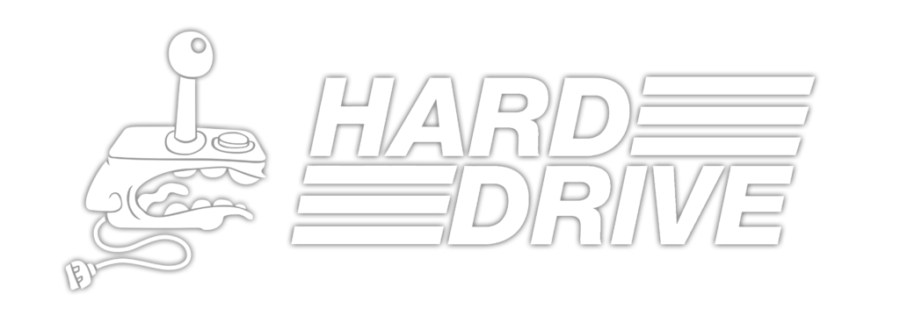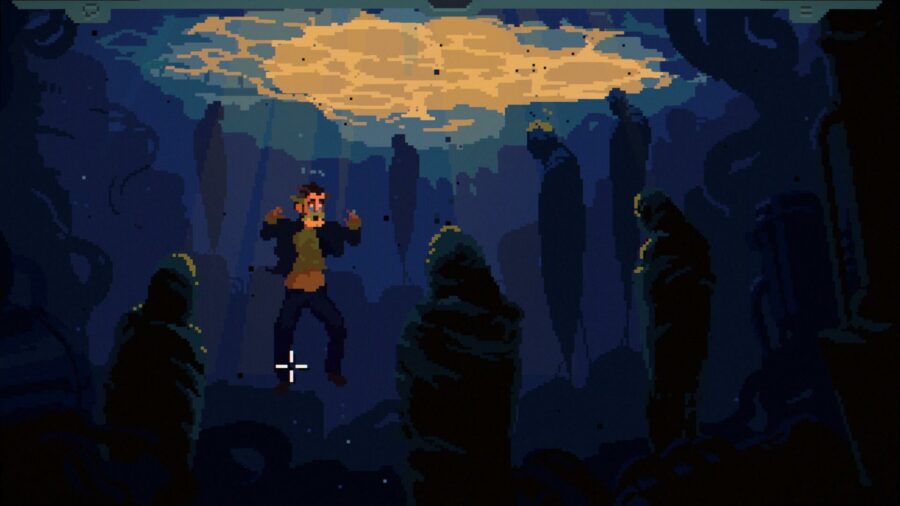The Drifter is a good game, but a rough sit.
It’s centered on its protagonist, Mick Carter, a homeless man who burned down his whole life rather than process his own grief. You’re often working to escape from death traps or monsters, but those aren’t as harrowing as one awkward conversation between Mick and his ex-wife.
The Drifter is easiest to describe as a direct descendant of old LucasArts point-and-click adventures like Monkey Island, as filtered through what its Steam page describes as “a dash of ‘70s Aussie grindhouse.”
It’s a horror game, but the source and subgenre of that horror changes several times over the course of the story. By rights, The Drifter should collapse under its own weight, but it’s smart, fast, and focused. I’m actually surprised it’s as coherent as it is, given some of the turns its story takes.
If that sounds interesting to you, you should probably pick this up without reading any further. The Drifter is a sort of New Weird murder mystery at heart, and like any mystery, it’s hard to discuss without spoilers. (It’s hard to take screenshots that don’t accidentally spoil at least one plot twist.) You’re better off going in as cold as you can.
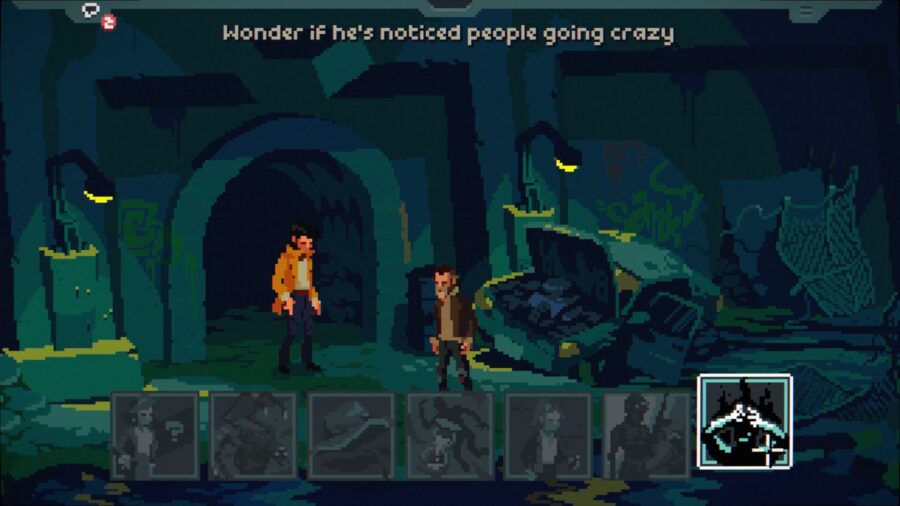
The Drifter is set in Australia at some point in the late ‘90s to early ‘00s. Mick has been a hobo for the last 5 years, in a largely fruitless attempt to outrun a personal tragedy. On the news that his mother has died, Mick returns to his hometown to attend her funeral, but is murdered almost as soon as he arrives.
For no obvious reason, Mick doesn’t stay dead. He crawls out of what was meant to be his grave with no idea what’s just happened to him or if it happened at all. Now he’s penniless, homeless, questioning his own sanity, stuck in the last place on Earth he wants to be, and trapped at the center of a series of seemingly unconnected mysteries.
If you’ve ever played a point-and-click adventure game, you already know how to play The Drifter. In each area, your goal is to search the environment for items and information, which you use to get Mick out of his latest problem. If you’re stuck, it’s usually because you missed some small detail or didn’t talk to everyone that you could’ve.
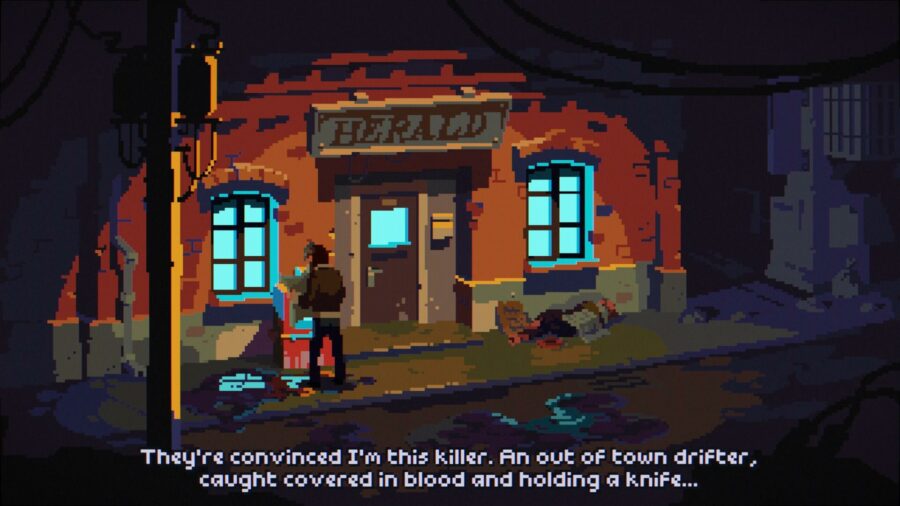
The big difference is that The Drifter runs off a streamlined version of the point-and-click formula. None of its maps are particularly big or elaborate, dialogue can be taken at your own pace, it’s careful to indicate when something in your environment is no longer relevant, and when (not if) you get Mick killed, he immediately comes back to life at a point just before the decision that led to his death. It’s ditched much of the strange post-Myst cruft that got attached to adventure games in the ‘00s, like having to spend half the game slowly walking across empty landscapes, and is all the better for it.
Most crucially, The Drifter ranks very low on the Grand Scale of Puzzle Impenetrability. While it’s got a couple of weird challenges scattered across its running time, common sense and pattern recognition will get you through most of the game. It’s thoughtfully built and has no desire to waste your time.
The story manages to match that overall pace. It’d be easy for a game built around several interlocking mysteries to end up feeling overstuffed, but you’ve solved several of Mick’s initial problems by the halfway point. The rest of the game is devoted to finding out how and why everything intersects. I did have a few leftover questions by the end, but on the whole, The Drifter nails its landing.
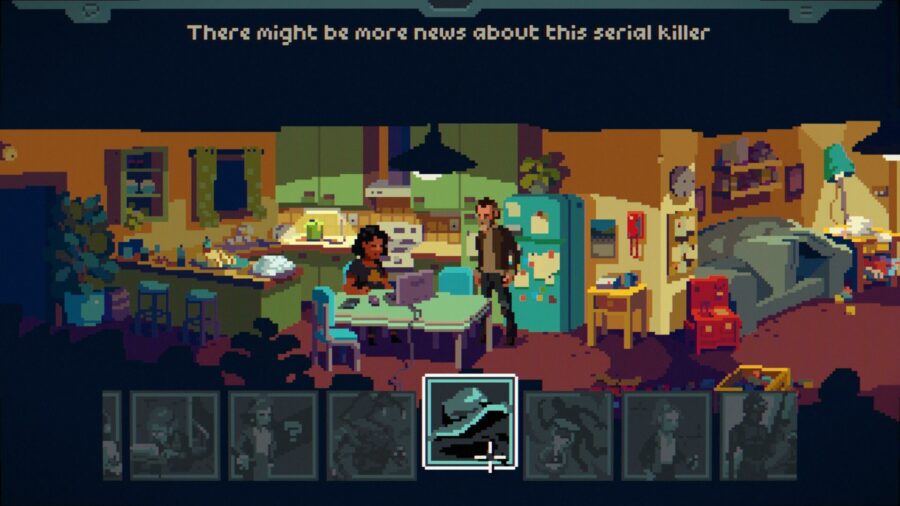
The Drifter reminds me of Peppered, in that both games make a genre staple into a cornerstone of their setting. There’s a broad streak of the old Sierra sadism in The Drifter – some of the most lovingly detailed animations in the game are devoted to Mick’s death scenes, including one that may actually be a first for the medium – but that’s one of its core mechanics. Sometimes the only way to get through a situation is to get Mick killed and see what you learn in the process.
My only real point against The Drifter is that it’s thematically uneven, to the point where I was surprised to find the game only had one writer. Chapter 5 goes real Eli Roth for a minute, and Chapters 6 and 7 feature a temporary genre shift that almost derails the entire narrative. I can’t accuse The Drifter of ever being boring, but I wouldn’t be surprised if it shook people loose at certain specific points.
As a point-and-click revival, the word I want to use for The Drifter is “confident.” It manages to dodge many of the usual shortfalls of the point-and-click formula while also telling a complicated story about the stages of grief. It shouldn’t work, but does. It can be rough at certain points, especially if you’re recently bereaved, but if you’re in a place where you can handle the subject material, The Drifter is a memorable, worthwhile run.
[The Drifter, developed and published by Powerhoof, is now available for PC via Steam, and the first chapter is available for free via Itch.io. This column was written using a Steam code sent to Hard Drive by a PR representative for Powerhoof.]
